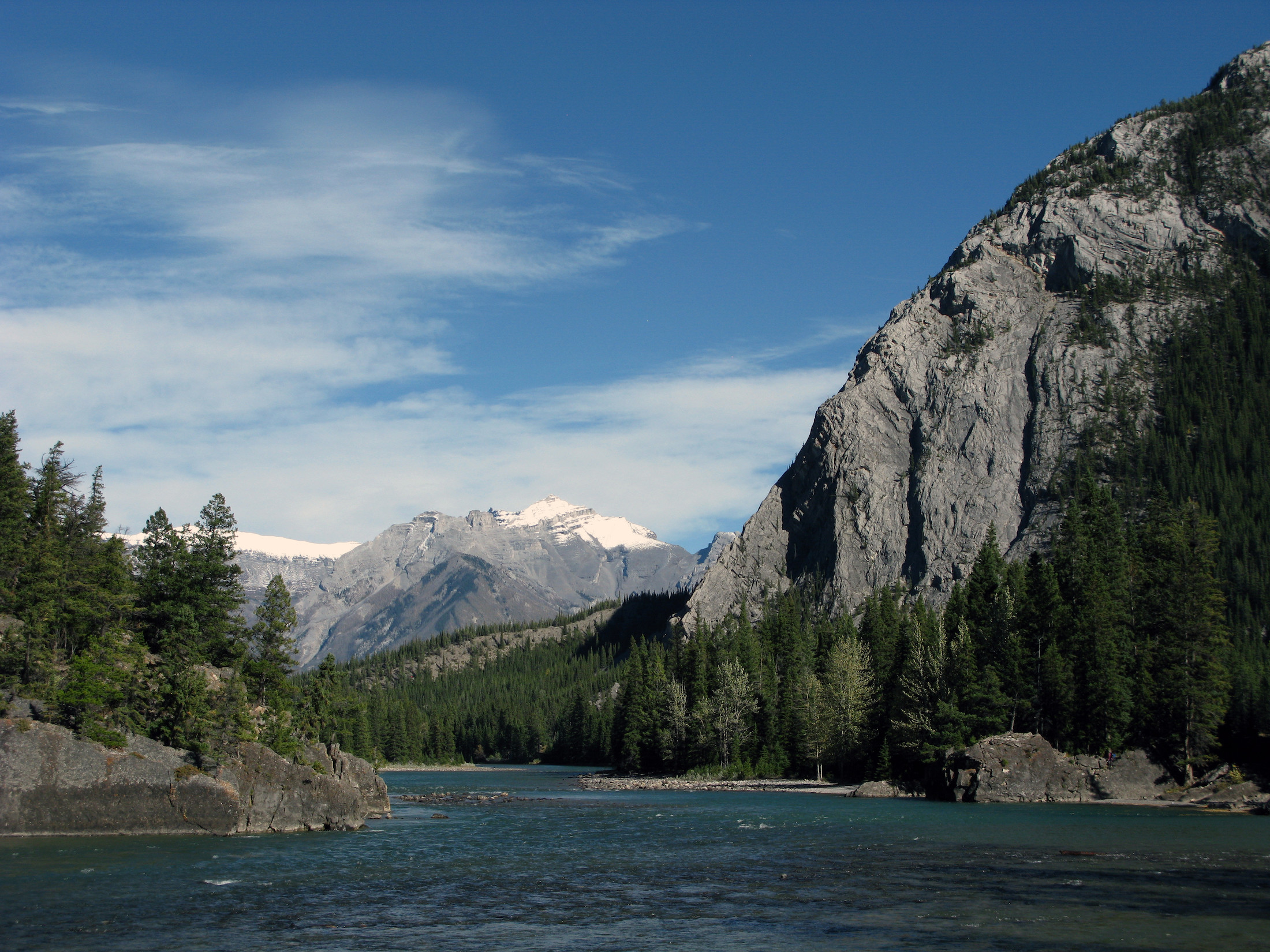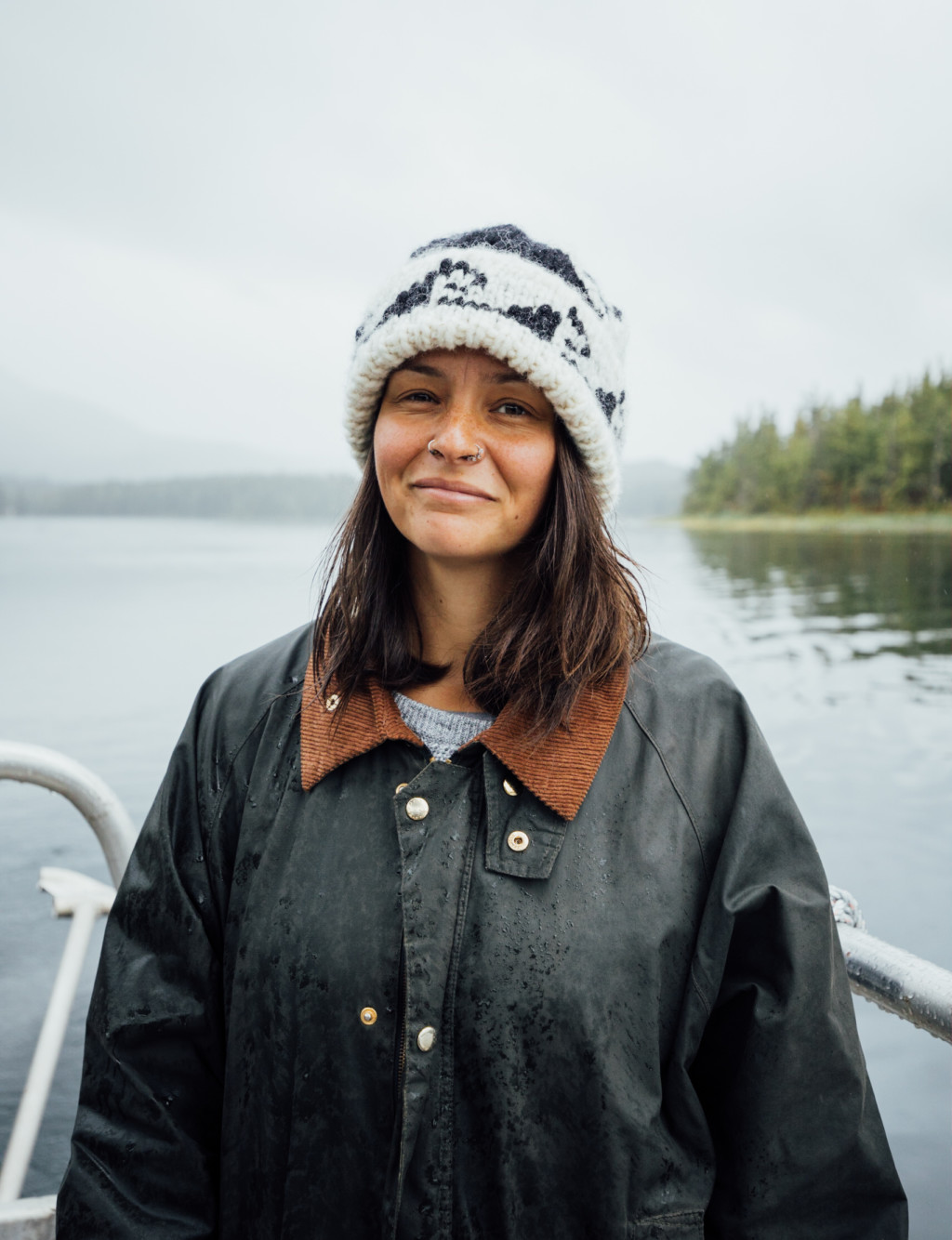
The Narwhal picks up National Magazine Award nomination for Amber Bracken’s oilsands photojournalism
Bracken was recognized for intimate portraits of residents of Fort Chipewyan, Alta., who told her...
Even when governments have good intentions — like promoting conservation — they don’t necessarily move forward with plans for Indigenous territories in a productive or helpful way, according to Kelly Brown, director of the Haíɫzaqv (Heiltsuk) Integrated Resource Management Department.
“A lot of work that takes place around management planning with the province or the federal government — they get all the work done, and then they come to us,” Brown told The Narwhal.
“They don’t realize that, in the community here, we’re already working towards putting our own plans together.”
Brown is a co-author of a recent academic paper that demonstrates how a resurgence in Indigenous governance can lead to more effective conservation.
The paper, “Supporting resurgent Indigenous-led governance: A nascent mechanism for just and effective conservation,” concludes that, worldwide, “increases in conservation in some of the most globally significant areas of conservation interest will increasingly not only be unjust, but also impossible without Indigenous consent and leadership.”
Brown pointed out that conservation techniques are often prescribed from offices in Ottawa, far removed from places where research and direct experience with the landscape are unfolding.
In one instance, Brown said he found inaccurate government data about areas of high and low grizzly bear populations that contradicted the findings of Haíɫzaqv research, which includes detailed bear monitoring. The research gives the Haíɫzaqv valuable insight into local grizzly populations. One study, for example, used grizzly hair samples to find a lower salmon run coincided with higher population levels of cortisol, the chemical associated with stress.
Indigenous people have the right to consultation when it comes to natural resource extraction but also when it comes to natural resource conservation and land use plans, Brown noted.
It’s time for Indigenous communities to be given the power and authority to lead conservation on their own lands, which they live upon and know well, he said.

Members of the Coastal Guardian Watchmen inspect their crab traps near Bella Bella, B.C. Photo: Louise Whitehouse / The Narwhal
Empowering Indigenous communities to lead conservation efforts comes with other significant benefits beyond respecting Indigenous rights and confronting the legacy of settler colonialism, found the paper, co-authored by Kyle Artelle, Melanie Zurba, Jonaki Bhattacharyya, Diana E.Chan, Jess Housty and Faisal Moola.
For example, Indigenous Guardians programs on British Columbia’s coast have delivered a social return on investment in ranges between 10:1 and 20:1, according to one study (which measured social, economic, cultural, and economic value).
The authors cite another study that found biodiversity within Indigenous-managed areas is often higher than, or at least equal to, biodiversity in colonial or state-run parks at the provincial or federal level in Canada.
The recent creation of new protected areas within Indigenous territories and alongside Indigenous governments has led to sizeable conservation gains, the authors point out.
The paper points to the newly created 14,250 square kilometre Edéhzhíe Dehcho Indigenous Protected Area in the Northwest Territories and the 14,000 square kilometre
Thaidene Nëné National Park Reserve along the Great Slave Lake, established in partnership by the Łutsël K’e Dene First Nation, the Northwest Territories government, Parks Canada, Northwest Territory Métis Nation and other Indigenous groups.
The paper also notes a recent proposal among the federal government, Nunavut and the Qikiqtani Inuit Association to create Tallurutiup Imanga, which, at 109,000 square kilometres, is set to become the largest protected area in Canada.
Lead author Kyle Artelle chuckled when he said the paper’s conclusions will not “blow folks’ minds” who are in Indigenous governance and communities, or even surprise people working in conservation who take part in these kinds of conversations.
“A lot of folks really get this, it seems obvious,” said Artelle, a biologist and adjunct professor with the geography department at the University of Victoria. “But when you leave the bubble, into some mainstream conservation groups, for example, there’s still what they call ‘fortress conservation.’ ”
Artelle said the idea of fortress conservation means aiming to conserve as many hectares as possible — and without any humans
“Some of the original national parks were very colonial. Banff has a horrible history of forcing folks out,” he said. “A lot of the original parks had this mentality that to protect nature you have to get rid of people … in a country where none of these ecosystems have existed since the last ice age without people, or longer.”

Bow River, Banff National Park. Photo: Janusz Sliwinski / Flickr
Other examples, such as weakened salmon populations, show even when governments do implement some restrictions with the goal of conservation, it doesn’t always lead to effective practices.
This year, for example, the Department of Fisheries and Oceans (DFO) implemented rolling closures of commercial and recreational fisheries. But many First Nations said the closures weren’t enough.
Some First Nations, including the Haíɫzaqv, decided against fishing, even though recreational fishing was still permitted by DFO.
Many First Nations said the government’s approach to dwindling stocks infringed on their constitutional rights of first access to fish and endangered already vulnerable salmon.
Life after Chinook: a West Coast fishing community looks to reinvent itself
The Haíɫzaqv wanted to take a “strong stance” and shut down certain areas to all types of fishing, including recreational fishing, Brown said. In 2015, the Haíɫzaqv famously occupied a DFO field office and pushed the commercial herring fishery out of their territory following a devastating population collapse. They continue to assert control over herring management, and worked with the DFO to suspend the commercial fishery in 2018.
Going forward, the Haíɫzaqv will enforce their own laws “rather than asking permission,” Brown said, recalling the Haíɫzaqv term Káxḷáya Ǧviḷás: “the ones who uphold the laws of our ancestors.”
While the DFO is relying more on traditional knowledge, change is incremental, Brown noted.
“Both the provincial and the federal government know that we aren’t going to sit back. We say something — we’re actually going to do it,” he said.
“We don’t like to threaten that way, but sometimes we need to get to that point.”
Jess Housty, another Haíɫzaqv co-author, said writing an academic-style paper was a new way to share the ancestral knowledge she’s inherited, even though she’s not an academic.

Jess Housty, acting executive director of Qqs Projects Society on a Guardian Watchmen vessel in Heiltsuk territory. Photo: Louise Whitehouse / The Narwhal
“Transmission of that ancestral knowledge is important work and sometimes we’re called to use tools our ancestors never would have imagined to do it,” she said in an interview.
Housty sees value in putting out these ideas in a new way.
“The crises we collectively face due to colonialism, capitalism, and climate change are too urgent for us to work in silos and I think this paper represents an opportunity to break our silos down.” Artelle hopes that the paper will make its way into the hands of decision-makers who lack information about Indigenous stewardship. Including Indigenous leadership in a national conservation strategy could help the federal government reach its target to protect 17 per cent of terrestrial areas and inland water, and 10 per cent of coastal and marine areas by 2020, he said.
Groups call on B.C. to fund Indigenous monitoring of mines in traditional territories
Indigenous peoples have also recently demonstrated the government will face legal challenges if it makes major land decisions without consent, as illustrated by First Nations opposition to the Trans Mountain pipeline and the Tsilhqot’in Nation stopping Taseko Mines from operating on their territory.
Housty said if the government wants to protect the environment, handing over jurisdiction shouldn’t be complicated.
“When it comes to stewardship and thriving lands and waters, no one can do that work better in Haíɫzaqv territory than the Haíɫzaqv people,” she said.
“Anyone who purports to share our goal of thriving lands and waters should be asking themselves how they can support us or make space for us to do what we need to do — not trying to do the work for us.”
Update November 28, 1:15pm pst: This article was updated to clarify the 2015 decline in herring populations led to the Haíɫzaqv occupying a DFO field office. The Haíɫzaqv worked with the DFO to suspend the herring commercial fishery in 2018.
Get the inside scoop on The Narwhal’s environment and climate reporting by signing up for our free newsletter. Angello Johnson’s shoulders burn, and his arms...
Continue reading
Bracken was recognized for intimate portraits of residents of Fort Chipewyan, Alta., who told her...

A guide to the BC Energy Regulator: what it is, what it does and why...

The B.C. government has introduced legislation to fast track wind projects and the North Coast...
